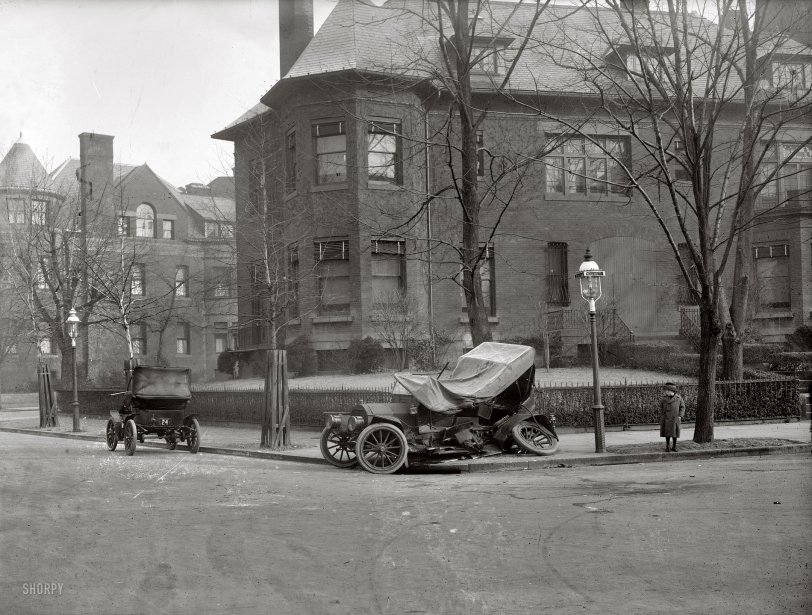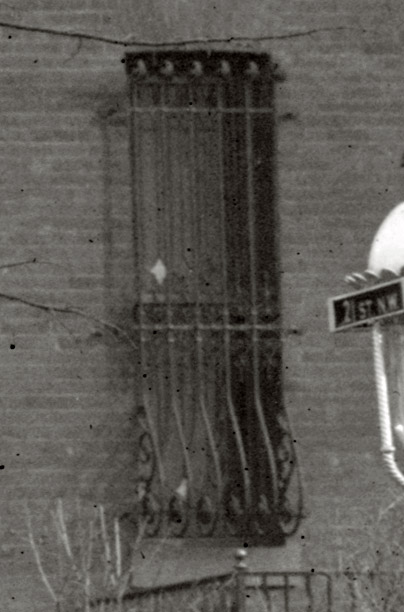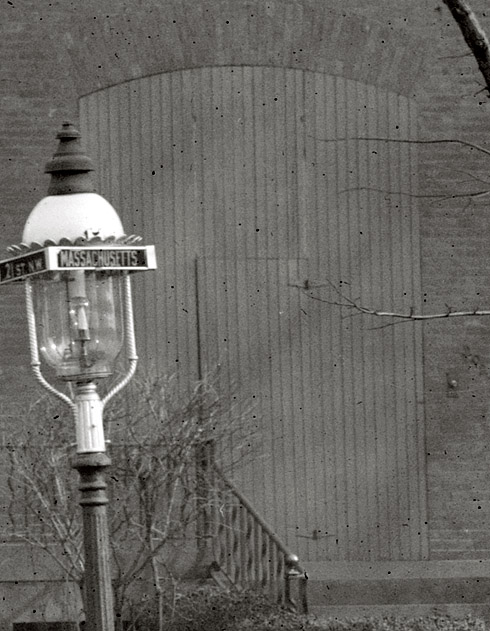


Framed or unframed, desk size to sofa size, printed by us in Arizona and Alabama since 2007. Explore now.
Shorpy is funded by you. Patreon contributors get an ad-free experience.
Learn more.

- Lofty addition
- In 1912
- Keenan Building
- Six years old
- Taken from the P.J. McArdle Roadway?
- It stood only 47 years
- Three track mind
- Incline to the right
- Reach for the sky, 1912 style
- No clean sweep
- Same Job Title, Same Face
- Sadly Lost
- Beautiful ...
- Where you get your kicks
- Aim High
- Pueblo Revival sisters
- Pueblo Neoclassicism
- Milk Man
- Regional dialect.
- Spielberg's inspiration
- Great Photo
- Loaf Story
- Do you still have the Rakes category?
- Could almost be a scene from the 1957 movie 'Hell Drivers'
- The Wages of Fear.
- Conspicuous by their absence
- Got Milk?
- All that aluminum
- No lefties
- Smoke 'em if you've got 'em
Print Emporium
24 and 26: 1917

"Auto wreck, Mass. Ave., Washington circa 1917." A comment on our earlier post of this accident correctly pegged the location as Massachusetts Avenue at 21st Street N.W. National Photo Company Collection glass negative. View full size.
Reconstrucción de accidentes
For the benefit of fellow English-speaking visitors, I've made a translation of the texts included in the fantastic accident reconstruction video posted here. Hope this can make the magnificent video easier to understand.
-.-.-
Found at www.elzo-meridianos.blogspot.com
A 100-year-old traffic accident.
It’s always amusing to see old pictures. By looking at these 1917 photographs it looks like we haven’t improved at all. An almost daily picture, where we see we have hardly learned anything. On it you can see a wrecked car on the curbside at Massachusetts Avenue in Washington, D.C. It was the longest street in the Capital, formerly known as Millionaire’s Row, now Embassy Row.
It’s impressive to see the massive damage, seeing a lonely child watching the wrecked car. You can see the broken wooden spokes of the destroyed wheels. The license numbers of the vehicles involved in the crash are perfectly clear: numbers 26 and 24. Many questions arise when we see these amazing pictures; what actually happened here?
What actually happened?
Warning
The information in the following video DOES NOT correspond to a rigorous case study. We don’t have the necessary and mandatory starting point data for any serious traffic accident investigation (conditions of traffic, measurements, forensic analysis of the vehicles, etc.)
The following video only offers an appreciation based on the photographs and developed by sheer fun.
Center for the Analysis of Accidents
Investigation and Research of Traffic Accidents
-.-.-
EXHIBITS
Exhibit A: Impact point
Exhibit B: Skid marks (left wheels)
Exhibit C: Skid marks (right wheels, less visible)
A priori, the vehicle parked at the curbside with license number 24, does not seem to be involved in the accident. There is no appreciable damage or deformations, not even on the front of the vehicle. There are not spilled liquids under it, nor any apparent evidence that could imply it had any part in the accident.
It only has the top pulled to the back without folding; that way it took less time to put it on place in case of rain. Had it been involved in the crash, the front of the car should show appreciable damage, even from the point where this photo was taken. The stick protruding from the left is the steering cane, a forerunner of today’s steering wheels.
Possible mechanics of the accident
The car on the photograph (represented in red in the reconstruction) could be driving on 21 St due North, with the intention of either continuing on the same direction or turning right on the intersection.
Another vehicle (represented on blue) was driving on Massachusetts Avenue, due west.
When it reached the intersection, the car of the photo, either due to loss of control or because of a mechanical problem, or because the driver tried to make the turn at an excessive speed, starts to skid to the right.
It leaves skid marks in the shape of a fan. The marks made by the left-side wheels are darker than those from the right-side wheels, because the left wheels were exerting more friction.
An impact is produced, of the type frontal – lateral, damaging mainly the rear-left section of the car. The rear wheels could break at this moment as a result of the impact, since they were bent on an opposite direction from the movement of the car with which the vehicle crashed.
Washington, D.C., 1917.
Massachusetts Avenue
21st Street
It is unlikely that the position on which the car was photographed was its authentic final position after the accident. Probably it was towed away to the curbside so that it wouldn’t obstruct the traffic on the street.
In order to move the car, they could have used the rope that appears to be tied to the rear of the car, with the other end of the rope left in the interior of the vehicle after the maneuver.
It is possible that the car was moved to this location in order to allow the leaking fuel to fall to the sewer, in an attempt to prevent possible accidental fires; who knows what policies or procedures followed the towing services back then?
Wow!
Unbelievably cool reconstruction of the accident!
Re: Accident Reconstruction
OMG! This raises the caliber of Shorpy comments to an entirely new level. ¡Me encanta!
I am still bothered by that rope, however. I think that rope is there because it was used to pull the stricken vehicle out of the intersection. Thus, the photographed resting place of this car shouldn't be assumed to be the direct result of the collision. (Perhaps this is idea is already incorporated in the "Accident Reconstruction." Por desgracia, my Spanish is not good enough to tell. Perhaps we could be blessed with an English version of this video for all us poor (ugly) Americans who only studied foreign languages in junior high school.)
Accident Reconstruction
Thanks to the Accident Analysis Center, one of the most important research firms and reconstruction of road accidents in Spain, made an enlightening video that answers the question "What really happened?"
http://www.elzo-meridianos.blogspot.com/
[All I can say is, "Wow!" (En Español: ¡Wow!) - Dave]
Religious Action Center
Although the idea of a Baptist night club is pretty delightful, kinda like Amish Karaoke Night, it's not really that kind of "action." The Arthur and Sara Jo Kobacker Building, 2027 Massachusetts Avenue NW at Kivie Kaplan Way, is home to the Religious Action Center of Reform Judaism, a lobbying organization.
Where's the Crowd?
I think this is the first accident photo I've seen on Shorpy where there isn't a group of people standing around looking at the wreck or the photographer.
Skid Marks
Looks like the skid marks tell the tale.
I see now
Thanks for the enlargement. Danged trifocals!
If this were a horror movie, this might be the time someone says: "I wonder who they're trying to keep out?"
Then the sidekick would say: "Or keep ... in!"
It got better with age
Finally, a building that looks better today than it did 90 years ago! If you look at the back of it on Street View, it's got the oddest collection of mismatched windows. I'm with Gus Oltz: would some Washingtonian please tell us what the heck this place is? (Bonus points if you can provide interior views.)
[It's the "Religious Action Center." Some sort of Baptist night club, maybe. - Dave]
Behind the bars
It appears that there are bricks a few inches behind the bars which doesn't make sense unless it was done for decorative purposes. Perhaps to offset the horse-barn look of the front door. Y'all are right. The house is becoming more interesting than the accident.
[I don't think those are bricks. - Dave]

Barred
Actually, I thought it interesting to see that "security bars" were necessary at such an early date (building, right). I guess I'm kind of amused at my naivete ~ city life being what it has always been.
Windows Too
I too am intrigued at the exterior blinds on the house.
I wonder if anybody was ticketed.
Tin Door?
Interesting building in the background. Why do you suppose they blocked off the doorway with sheets of corrugated tin?
[Those are boards, and there's still a door. It is unusual. - Dave]

What is that building?
Someone else beat me to the Street View, but I looked alongside the building, and it is quite long. Was it a dorm, or boardinghouse, or something?
Someone needs to print this picture
And deliver it to the owners of the current address. I sure wish someone would hand me a picture of my 1918 house when it was relatively new...
JazzDad
I'm getting the idea, JazzDad.
Ever since I found Shorpy, I've been wanting to post one of those definitive, plonking replies, such as:
"That's Luna Park at Coney Island. The big fish sculptures at the base of the tower are the giveaway" or
"Has to be a B-17E, look at the dorsal fin and the framed nose transparency"
Someone always beats me to it. But thanks to your post, I can see whole new fields of commentary opening up......
Crash Investigation
on closer inpection of the photo reveal debris from the wrecked car in the middle of the street. it was probably dragged fron there to the sidewalk.
I'm amused by these photos of early century DC auto wrecks. with so few cars on the road, how did they ever find each other, then run into each other?
24
Seems to have a tiller instead of a steering wheel.
Psychic Midget!
The kid obviously crushed the vehicle with her telekinetic powers. It's always the midget!
Darn it!
Dave, you stole what was going to be my comment with the title of the post! Only 26 cars in DC, and two are right here.
The real question is what car or other large moving object hit #26, as it appears that #24 is just pulled to the curb parked.
Windows
The most interesting thing about this picture is the exterior Venetian blinds on the corner house.
Ahhhh
With this photo, we now have the complete scenario:
A. The vehicle was parked at the curb when it was struck. (Evidence the parking brake is set, photo 1.)
B. The rope had secured the vehicle to the lamp post. (DC had a vehicle theft problem since the Jefferson buggy incident of 1803.)
C. I am so full of it.
























On Shorpy:
Today’s Top 5